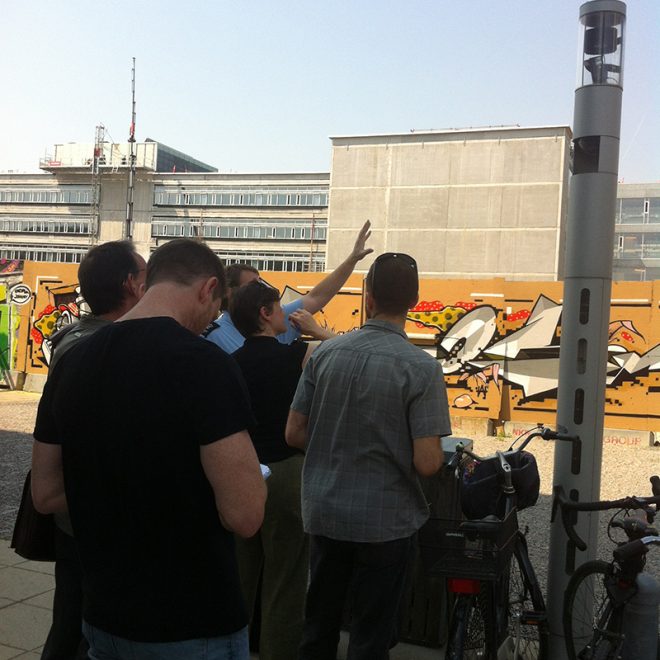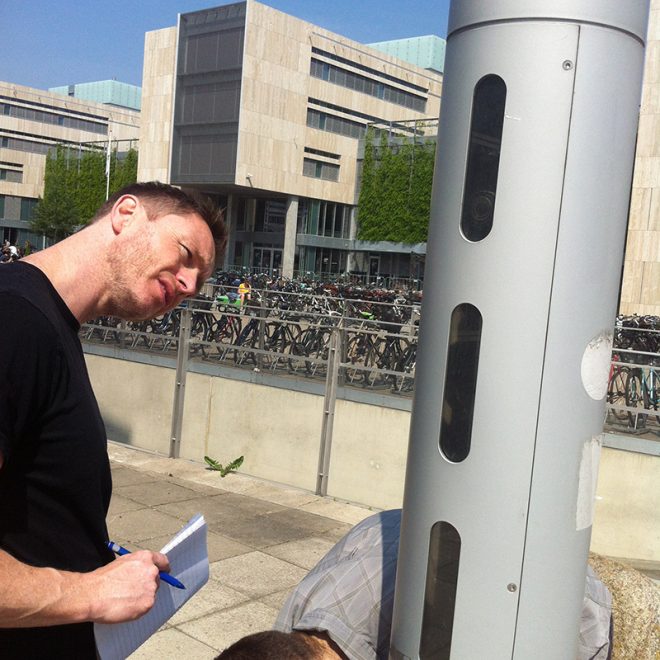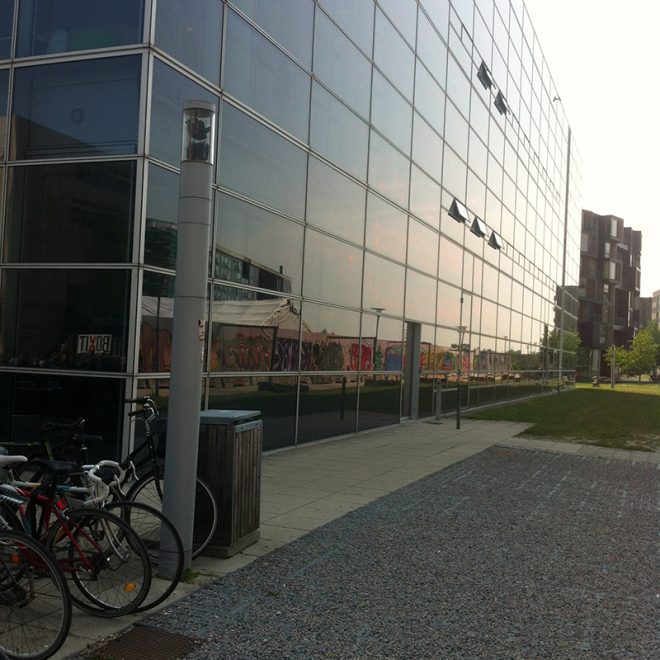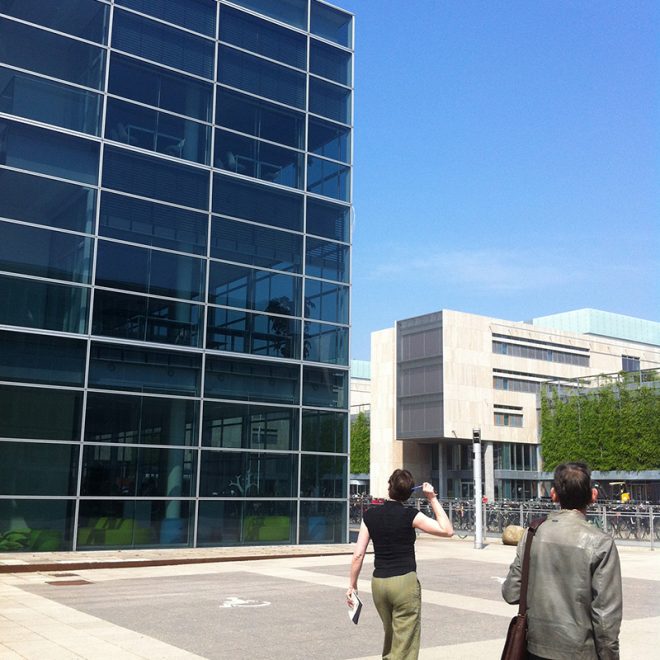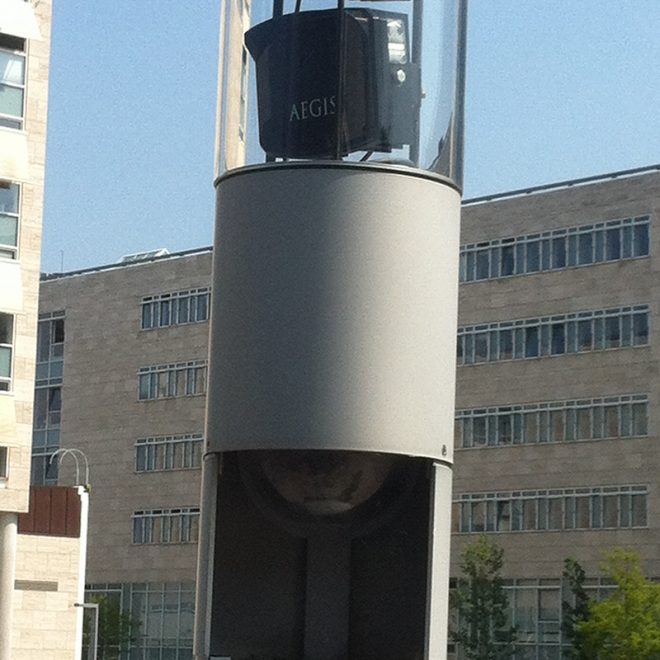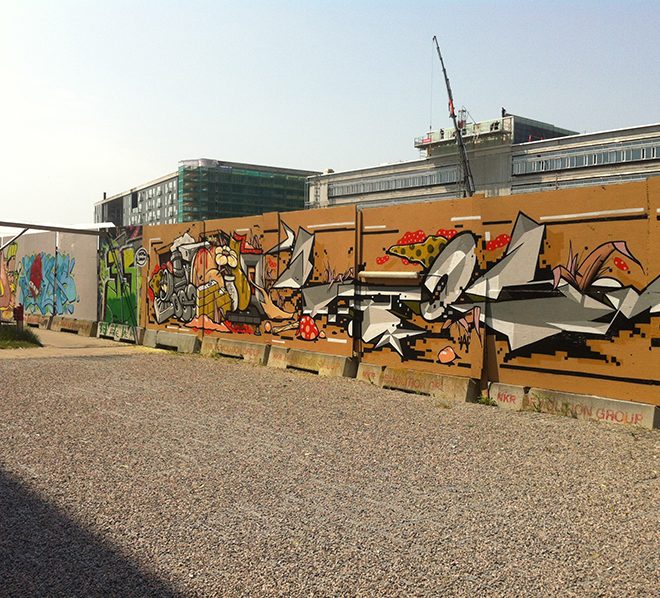DATA AND SURVEILLANCE
IT University, Copenhagen
At the IT University in Copenhagen, PhD students studying data ethics used a data walk to explore a different approach to their subject.
OBSERVING
Spotting visible examples of data infrastructure
One walking group tried very hard to spot visible examples of data infrastructure in the built environment of the city. They spent a long time observing a set of featureless steel poles surrounding the newly built public library. They appeared to have cameras and monitoring systems in them, and the walkers spent a long time photographing and discussing these. While they were clustered around the pole, a security guard approached them from inside the library.
The walkers asked about the poles. Did they collect data? The security guard explained that these poles were part of a perimeter surveillance project for the library, and that movement of both people and vehicles outside of specific hours would trigger a notification within the library’s control room. The main concern? That the library walls might get graffitied. The walkers were amused to note that an expanse of nearby walls were covered with graffiti, but this was apparently in a location where this was permitted or even encouraged.
QUESTIONING
Security Guard
The walkers found the openness of the security guard to be surprising, but revealing. The surveillance system depended on observing and responding to particular types of data that were not clear to the people producing them.
The centralized point of control is typical of urban surveillance systems, and the whole experience left the walkers wondering about the extent to which this surveillant data collection was necessary, proportionate or appropriate for the safety of a public library.

